Mohammad Reza Kavianinia
On Age of Information and Energy-Transfer in a STAR-RIS-assisted System
Dec 05, 2023Abstract:Battery-limited devices and time-sensitive applications are considered as key players in the forthcoming wireless sensor network. Therefore, the main goal of the network is two-fold; Charge battery-limited devices, and provide status updates to users where information-freshness matters. In this paper, a multi-antenna base station (BS) in assistance of simultaneously-transmitting-and-reflecting reconfigurable intelligent surface (STAR-RIS) transmits power to energy-harvesting devices while controlling status update performance at information-users by analyzing age of information (AoI) metric. Therefore, we derive a scheduling policy at BS, and analyze joint transmit beamforming and amplitude-phase optimization at BS and STAR-RIS, respectively, to reduce average sum-AoI for the time-sensitive information-users while satisfying minimum required energy at energy-harvesting users. Moreover, two different energy-splitting and mode switching policies at STAR-RIS are studied. Then, by use of an alternating optimization algorithm, the optimization problem is studied and non-convexity of the problem is tackled by using the successive convex approximation technique. Through numerical results, AoI-metric and energy harvesting requirements of the network are analyzed versus different parameters such as number of antennas at BS, size of STAR-RIS, and transmitted power to highlight how we can improve two fold performance of the system by utilizing STAR-RIS compared to the conventional RIS structure.
Secrecy Rate Analysis of STAR-RIS in Presence of Energy Harvesting Eavesdroppers
Sep 24, 2022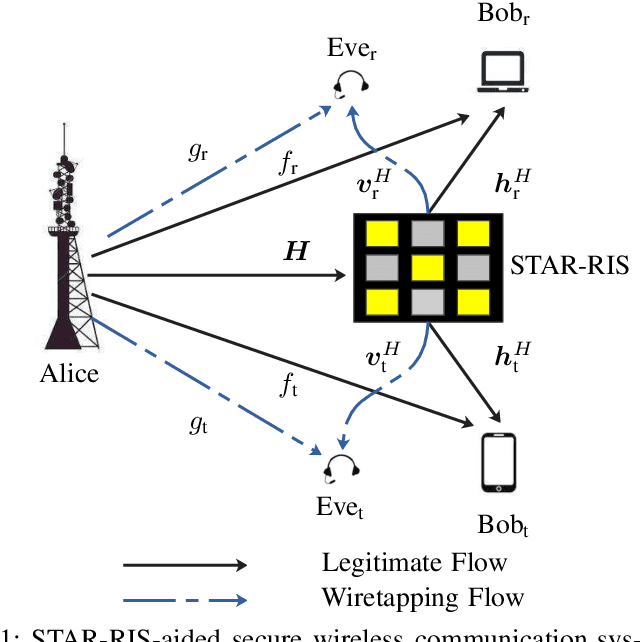
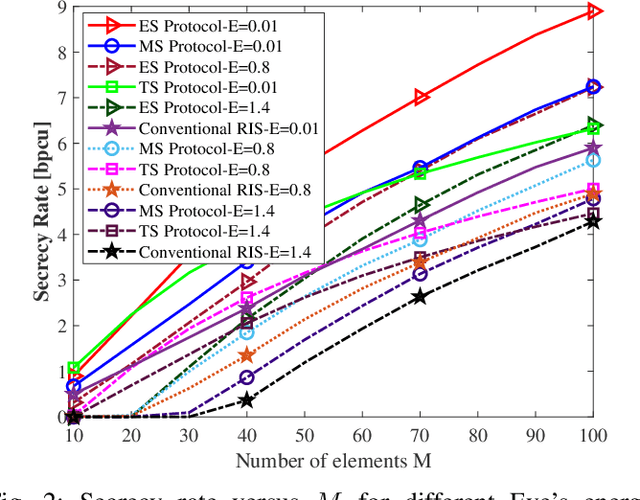
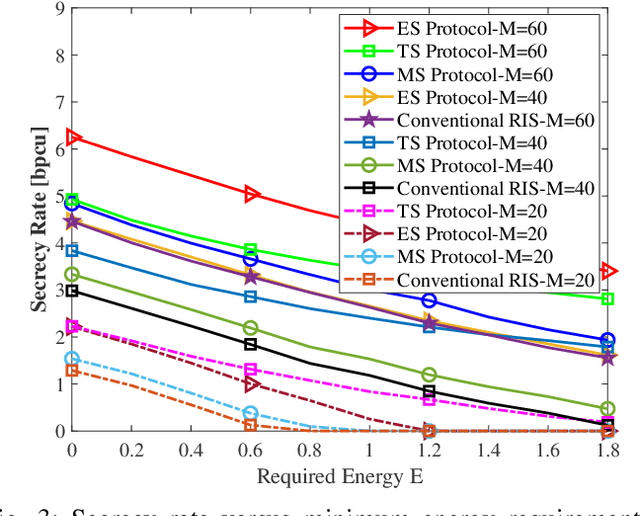
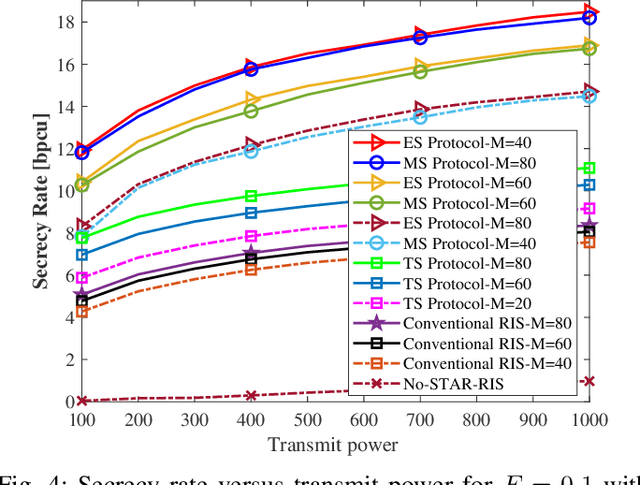
Abstract:This work peruses a simultaneous transmitting and reflecting reconfigurable intelligent surface (STAR-RIS) based wireless system wherein untrusted energy harvesting nodes wiretap the legitimate signal. The achievable secrecy rate and the harvested energy for multicast communication are computed as functions of STAR-RIS transmission and reflection coefficients (TARCs). Thus, to maximize the secrecy rate while satisfying the minimum required harvested energies, the non-convex optimization problem is investigated. By using the Dinkelbach transformation and semi-definite relaxation technique, the optimization problem is transformed into a convex problem. Eventually, the numerical results are reported to specify the effects of the size of the STAR-RIS and optimizing its TARCs elements on magnifying the secrecy rate-energy harvesting region.
Resource allocation of STAR-RIS Assisted Full-Duplex Systems
Sep 18, 2022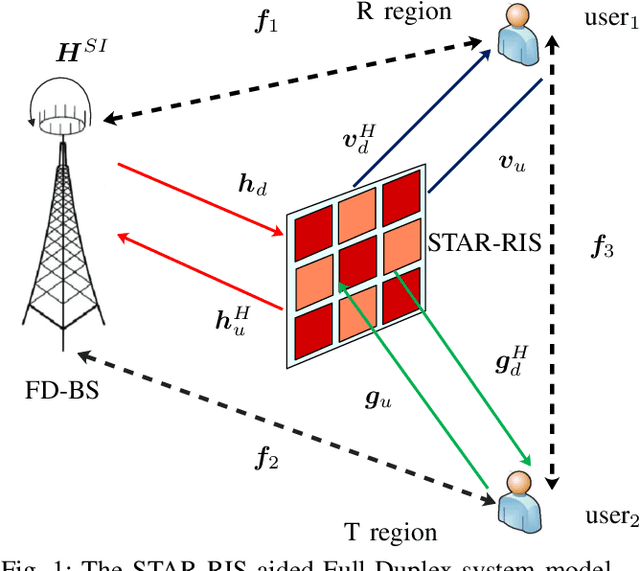
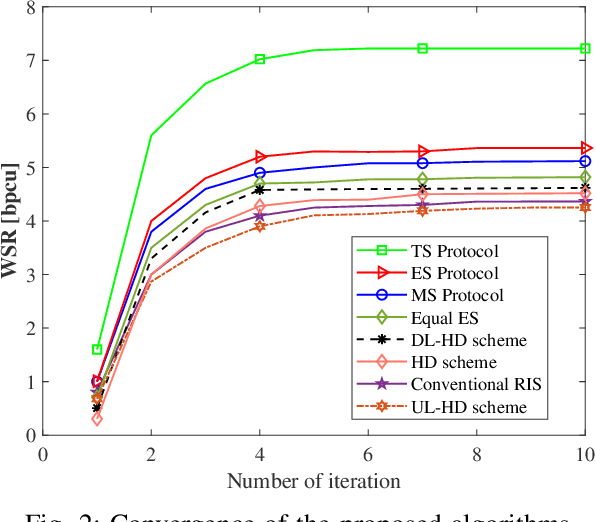
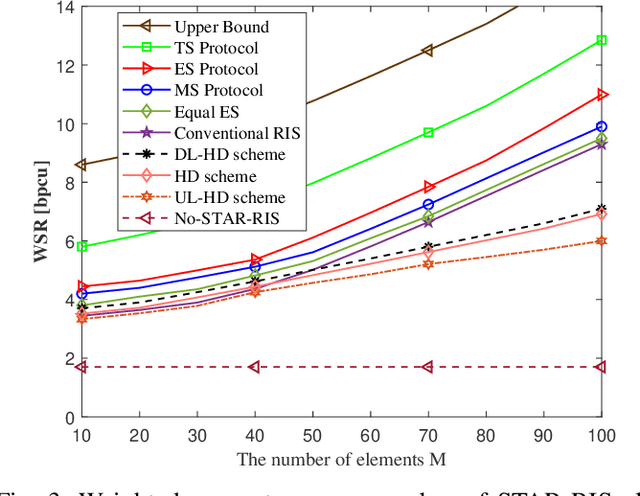
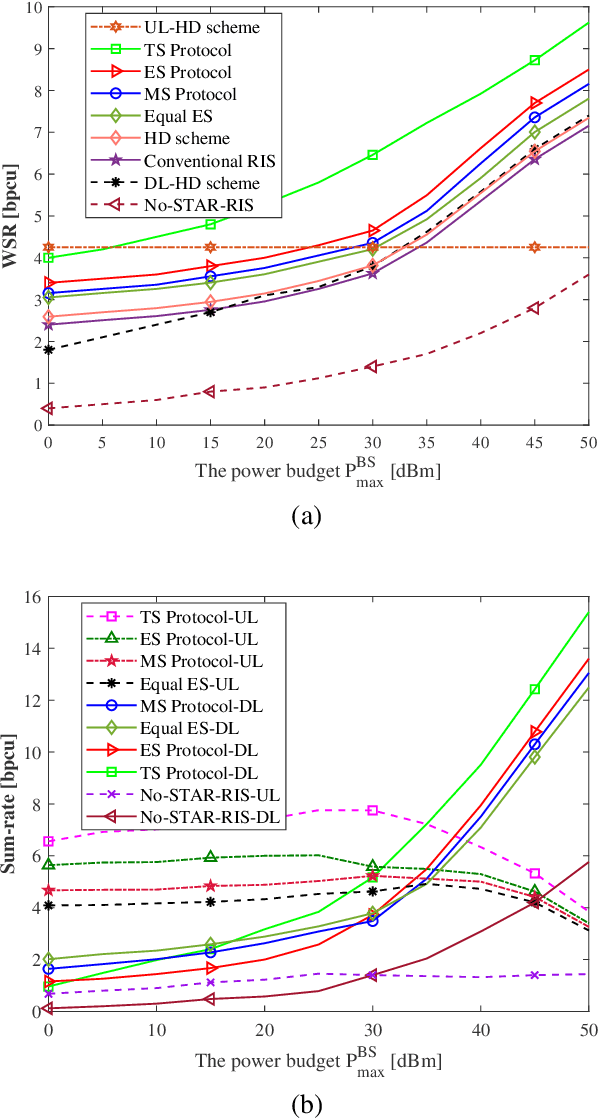
Abstract:Well-designed simultaneously transmitting and reflecting RIS (STAR-RIS), which extends the half-space coverage to full-space coverage, incurs wireless communication environments to be smart and reconfigurable. In this paper, we survey how STAR-RIS affects the performance of full-duplex communication systems with the presence of full-duplex users, wherein the base station (BS) and the uplink users are subject to maximum transmission power constraints. Firstly, the weighted sum-rate (WSR) is derived as a system performance metric. Then, we formulate the resource allocation design into an equivalent weighted minimum mean-square-error form and then transform it into several convex sub-problems to maximize the WSR as an optimization problem which jointly optimizes the beamforming and the combining vectors at the BS, the transmit powers of the uplink users, and phase shifts of STAR-RIS. Although the WSR optimization is non-convex, an efficient iterative alternating procedure is proposed to achieve a sub-optimal solution for the optimization problem. Secondly, the STAR-RIS's phase shifts are optimized via the successive convex approximation technique. Finally, numerical results are provided to explain how STAR-RIS improves the performance metric with the presence of full-duplex users.
 Add to Chrome
Add to Chrome Add to Firefox
Add to Firefox Add to Edge
Add to Edge